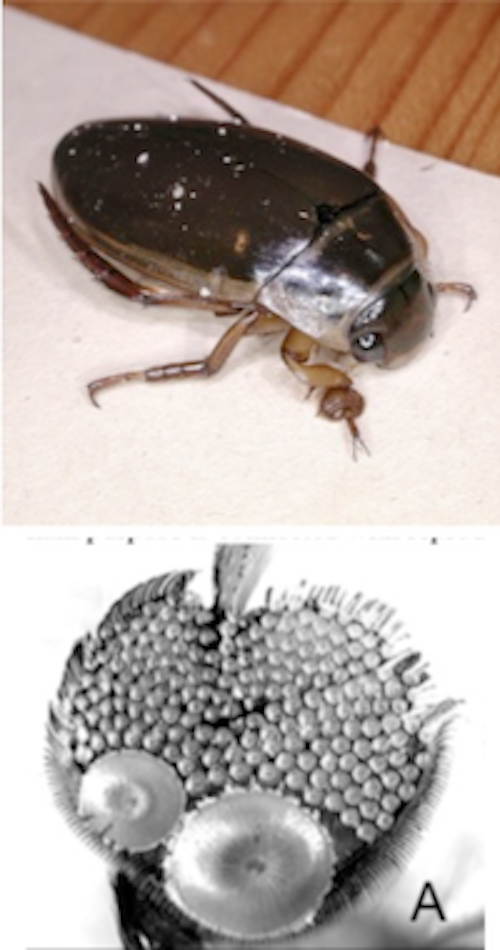Biomechanics of suction organs in aquatic insects
Supervisor: Prof Walter Federle
Project Summary
Firm attachment to surfaces and the ability to switch rapidly between attachment and detachment is essential for animals living in diverse environments such as the canopy of forests, fast-flowing rivers, or the intertidal zone. While many slow-moving or sessile aquatic animals use glues to attach themselves to the substrate, a more dynamic type of underwater attachment is achieved through suction organs, which are found in a wide range of aquatic animals. Insects are the most diverse group of animals on Earth, but only two groups of aquatic insects are known to have evolved suction attachment, namely net-winged midge larvae [1,2] and diving beetles [3,4]. Despite similar demands (strong attachment under water, locomotion, attachment on rough or biofilm-covered surfaces), both attachment systems are fundamentally different. While the suction organs of net-winged midge larvae are densely covered by hair-like microtrichia, and their movement is controlled by muscles, those of diving beetles are relatively smooth, and do not contain any intrinsic muscles. It is unclear how despite their different design, both systems can fulfil similar functional requirements.
The aim of this project is to investigate the suction attachment system of male diving beetles, and compare it with our recent findings on net-winged midge larvae [1,2]. How are the beetles' suction organs designed, how do they form a tight seal, and how do they attach and detach? Biological attachment systems serve as important models for man-made adhesive devices. This project on insect suction organs may provide inspiration for new attachment systems that work on wet, rough and contaminated substrates, as needed for medical applications or object manipulation in agriculture and food processing [5].
Details of work undertaken by the student
The student will conduct fieldwork to observe and record the male diving beetles' natural attachment behaviour, to characterise the natural surfaces on which they attach, and to collect beetles for experiments in the lab. The candidate will characterise the ultrastructure and micromechanics of the suckers using microscopy and micro-force tests, and visualise their adhesive contact zone on different substrates. The attachment performance of single legs or suction organs will be measured in vivo under different conditions.
References
1. Kang, V, R Johnston, T van de Kamp, T Faragó & W Federle (2019) Morphology of powerful suction organs from blepharicerid larvae living in raging torrents. BMC Zool 4: 10.
2. Kang, V, RT White, S Chen & W Federle (2021) Extreme suction attachment performance from specialised insects living in mountain streams (Diptera: Blephariceridae). eLife 10: e63250.
3. Chen, Y, M-C Shih, M-H Wu, E-C Yang & K-J Chi (2014) Underwater attachment using hairs: the functioning of spatula and sucker setae from male diving beetles. J R Soc Interface 11: 20140273.
4. Karlsson Green, K, A Kovalev, EI Svensson & SN Gorb (2013) Male clasping ability, female polymorphism and sexual conflict: fine-scale elytral morphology as a sexually antagonistic adaptation in female diving beetles. J R Soc Interface 10: 20130409.
5. Li, S, H Liu, H Tian, C Wang, D Wang, Y Wu & J Shao (2021) Dytiscus lapponicus-inspired structure with high adhesion in dry and underwater environments. ACS Appl Mater Interfaces 13: 42287-42296.

